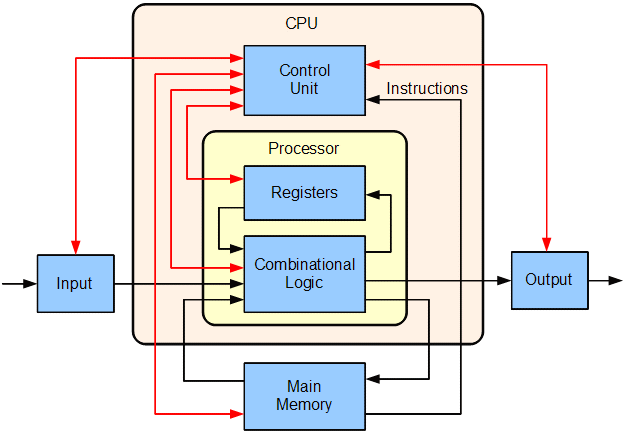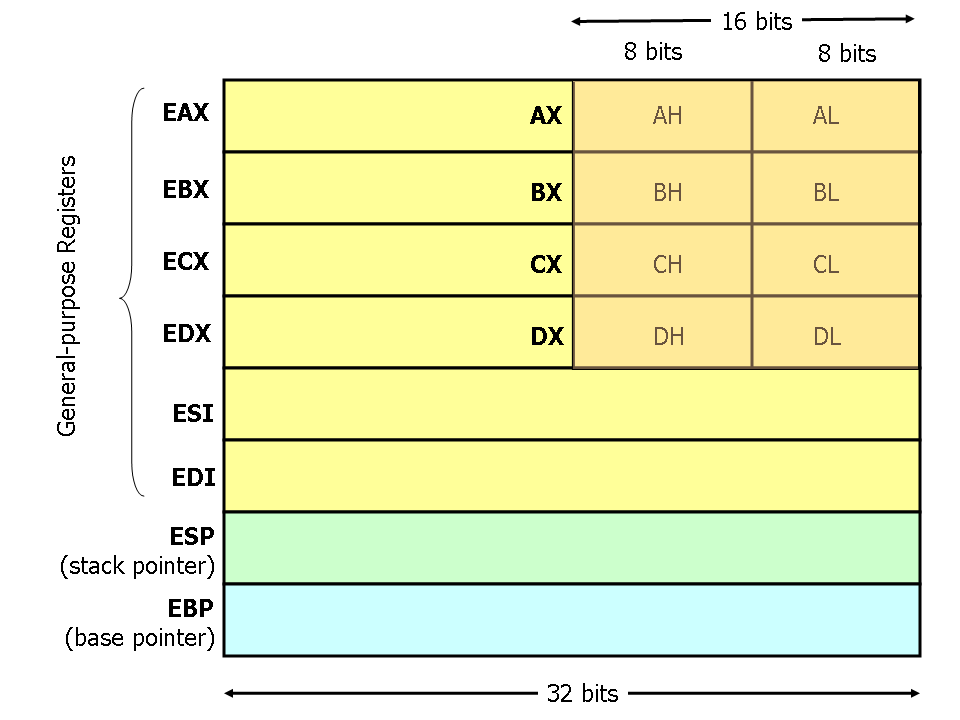What’s in a CPU?
Inside a CPU is a group of different microchips that collectively work together to serve the functionality of a CPU.

I/O
To interact with other devices on the system, the CPU contains input and output lanes which are physically connected (via ‘busses’ on the circuit board) to those devices.
I/O can include keyboards, mice, monitors, speakers.
Registers
Registers are data storages that lie in the CPU. They have a fixed size (as specified by the CPU architecture).
Compared to other memory devices (i.e. RAM, SSDs, HDDs, etc…) - the CPU’s access to its registers is very fast.
The CPU uses registers to perform all of its state-related operations.
General Purpose Registers
The function and purpose of General Purpose registers are dictated by the software and code being executed.
When data from the RAM / other storage devices are requested, they are eventually loaded into these registers to be processed.
Programs will generally interact with these registers the most.
i.e. Intel x86 Architecture: 8, 16, 32 bit registers

Location Registers
Location registers contain various addressed required by the CPU to perform instructions.
- The Pointer Register contains the current instruction address
- The Stack Pointer Register contains the current location of the stack
- The Base Pointer Register contains the address of the current stack frame
Status Registers
A CPU would contain a status register - that holds various attributes/flags about the CPU’s current state. These are used by future instructions
- e.g.
30-30=>zero flag=1 - e.g.
30-15=>zero flag=0 - e.g.
30-50=>sign flag=1
Each different flag is (usually) 1-bit long, and such a 32-bit status register can hold 32 different flags.
Control Registers
Control registers dictate the deep internal operation of how the CPU uses its registers, resources and other devices in the system